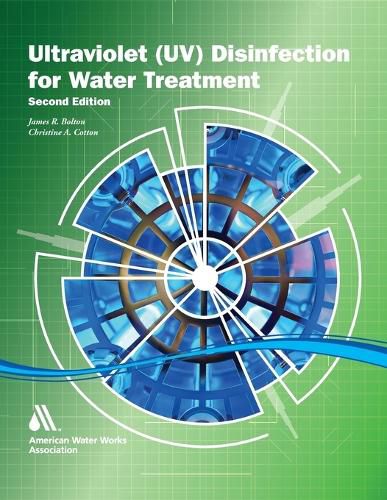Readings Newsletter
Become a Readings Member to make your shopping experience even easier.
Sign in or sign up for free!
You’re not far away from qualifying for FREE standard shipping within Australia
You’ve qualified for FREE standard shipping within Australia
The cart is loading…






This title is printed to order. This book may have been self-published. If so, we cannot guarantee the quality of the content. In the main most books will have gone through the editing process however some may not. We therefore suggest that you be aware of this before ordering this book. If in doubt check either the author or publisher’s details as we are unable to accept any returns unless they are faulty. Please contact us if you have any questions.
Here is a complete introduction and guide to UV technologies for the disinfection of drinking water. This book describes the powerful capabilities of ultraviolet light as a water disinfectant. It explains in detail UV how UV inactivates and makes harmless microbes by altering their DNA. It tells you how UV is measured and dosed to inactivate any type of microbe in your source water. You will understand how UV can fit into your specific treatment scheme, whether yours is a large, medium or small system using filtered or unfiltered water, an uncovered reservoir, groundwater, or surface water.
The book describes the effects of turbidity, algae, and other water quality issues on UV performance, as well as pretreatment that may be needed prior to UV, such as filtration or chlorine reduction.You can use The Ultraviolet Disinfection Handbook to help you plan, purchase, install, and operate a UV installation. The book provides the specific information you need to know about UV equipment: major classes of UV water treatment systems, types of UV lamps, UV sensors, sleeves, power needs, and control equipment.
In addition, chapters provide complete guidance and information on key design issues, including UV transmittance; equipment fouling and aging; equipment location, layout, and site constraints; flow and hydraulics; and electric power. It also explains USEPA requirements for validation of UV reactor performance prior to startup, plus operational requirements. You also will find helpful information on UV cost estimating.
$9.00 standard shipping within Australia
FREE standard shipping within Australia for orders over $100.00
Express & International shipping calculated at checkout
This title is printed to order. This book may have been self-published. If so, we cannot guarantee the quality of the content. In the main most books will have gone through the editing process however some may not. We therefore suggest that you be aware of this before ordering this book. If in doubt check either the author or publisher’s details as we are unable to accept any returns unless they are faulty. Please contact us if you have any questions.
Here is a complete introduction and guide to UV technologies for the disinfection of drinking water. This book describes the powerful capabilities of ultraviolet light as a water disinfectant. It explains in detail UV how UV inactivates and makes harmless microbes by altering their DNA. It tells you how UV is measured and dosed to inactivate any type of microbe in your source water. You will understand how UV can fit into your specific treatment scheme, whether yours is a large, medium or small system using filtered or unfiltered water, an uncovered reservoir, groundwater, or surface water.
The book describes the effects of turbidity, algae, and other water quality issues on UV performance, as well as pretreatment that may be needed prior to UV, such as filtration or chlorine reduction.You can use The Ultraviolet Disinfection Handbook to help you plan, purchase, install, and operate a UV installation. The book provides the specific information you need to know about UV equipment: major classes of UV water treatment systems, types of UV lamps, UV sensors, sleeves, power needs, and control equipment.
In addition, chapters provide complete guidance and information on key design issues, including UV transmittance; equipment fouling and aging; equipment location, layout, and site constraints; flow and hydraulics; and electric power. It also explains USEPA requirements for validation of UV reactor performance prior to startup, plus operational requirements. You also will find helpful information on UV cost estimating.